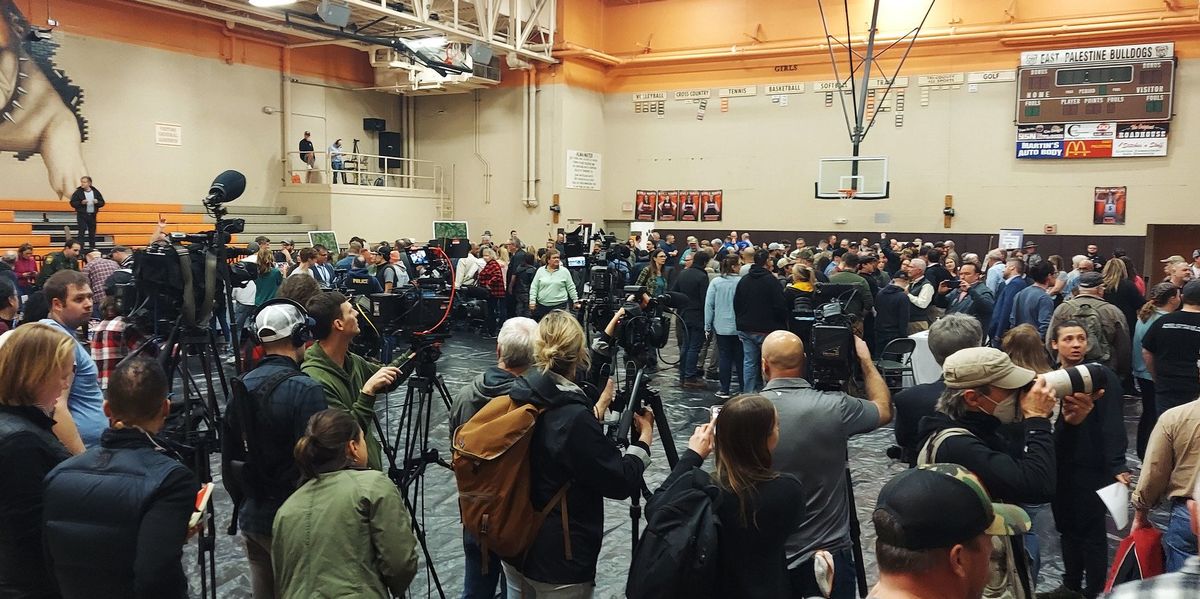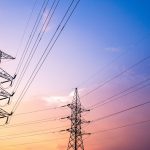
Vinyl chloride, the cancer-causing chemical released in the February train derailment disaster in East Palestine, Ohio, contaminates many communities in the U.S. due to pollution from plastics manufacturing plants, according to a new report.
The report, published this month by environmental advocacy group Toxic-Free Future and data company Material Research, found that vinyl chloride particularly threatens communities of color and economically disadvantaged communities. “This is a major issue of equity and environmental injustice,” Mike Schade, director of Mind the Store, a program of Toxic-Free Future, told Environmental Health News (EHN).
Toxic discharges
Vinyl chloride is used in the production of a commonly used plastic, polyvinyl chloride, or PVC. The chemical is
classified by the U.S. Environmental Protection Agency (EPA) as a carcinogen, and has been linked to higher rates of lung and liver cancer, as well as liver disease, neurological problems and miscarriage.
The report shows that 19 PVC factories in the U.S. released more than 400,000 pounds of vinyl chloride into the air in 2021. Five companies – Westlake Chemical, Formosa Plastics, Occidental Chemical, Shintech and Orbia (Mexichem) – were the worst offenders. Together, they and made up 97% of the total vinyl chloride air pollution that year.
Westlake Chemical released the most vinyl chloride, reporting 185,807 pounds of air discharges; followed by Formosa Plastics with 86,595 pounds and Occidental Chemical with 59,679 pounds. According to the report, these numbers may be an undercount of pollution caused by Occidental Chemical and Westlake Chemical, since both companies have failed to disclose their production volumes to the public, calling them “confidential business information.”
The EPA permits the release of vinyl chloride into the air, though the agency
recently proposed to strengthen air pollution standards for chemical plants that emit vinyl chloride and require chemical plants to monitor air pollution entering nearby communities.
“Here in the United States, it’s legal to pollute,” said Schade. “Unfortunately, our federal chemical safety system has failed to protect American communities and workers from exposure to cancer-causing chemicals like vinyl chloride.”
“Westlake is committed to operating in a safe and environmentally responsible manner and works with state and federal regulatory authorities to minimize emissions,” said a spokesperson for Westlake Chemical in a statement to
EHN. Occidental Chemical and Formosa Plastics did not respond to requests for comment about the extent of their vinyl chloride releases.
“We live in a cocktail”

Of the 373,262 Americans living within three miles of a vinyl chloride or PVC manufacturing facility or PVC waste disposal facility, 63% are people of color. Residents living in the three-mile radius earn 37% below the national average, according to the report.
One such community is Mossville, Louisiana — surrounded by 16 industrial facilities, according to Christine Bennett, a former resident of Mossville, including two Westlake vinyl chloride factories. In 2021, both factories released a combined 26,407 pounds of vinyl chloride into the air.
Bennett said that air pollution fills Mossville “like a bowl.” Bennett and her family continue to deal with health problems, including persistent headaches, high blood pressure, asthma and multiple instances of cancer, which she believes are linked to pollution. Bennett has had multiple family members die of cancer and kidney failure. “We live in a cocktail every day. We just don’t drink it, we breathe it,” she told EHN.
Testing has shown that community members in Mossville have dioxins and furans—two toxic chemicals related to the production and burning of vinyl chloride—in their blood at levels three times higher than the national average, according to Wilma Subra, an environmental chemist who has conducted testing in the community. Dioxins and furans are linked to multiple health problems including cancer, reproductive and developmental problems and damage to the immune system.
Searching for fresh air, Bennett and her husband recently moved across the river to Lake Charles. They’re living there as they make plans to move even further from Mossville, since pollution still travels from Westlake plants to Lake Charles.
“I jumped out of the boiling pot into the pot across the bridge,” said Bennett. “It didn’t do anything. I just have to survive long enough to find another place to go.”
Transporting toxics

Pollution from the chemical plants isn’t the only thing that worries Bennett — risks from transporting vinyl chloride and hazardous waste concern her, too. “Everywhere there’s an industry, there’s a railroad track,” she said.
In 2021, the 19 PVC factories in the U.S. generated 20 millions of pounds of hazardous waste, according to the report. All that waste is sent from factories to hazardous waste disposal facilities in the South-central U.S., usually via rail.
On average, there are about three train derailments in the U.S. each day. While most don’t cause disasters like the derailment in East Palestine, each shipment of vinyl chloride or hazardous waste provides another opportunity for a similar outcome. “The East Palestine disaster highlights the dangers of transporting this fundamentally hazardous chemical in communities across the U.S.,” said Schade. “But [it] was not an isolated incident.”
History of violations
Some of the chemical companies responsible for widespread pollution have violated EPA regulations. Formosa Plastics has a history of non-compliance with federal air pollution laws and federal water pollution laws. In 2019, Formosa was forced to pay a $50 million settlement after illegally dumping billions of plastic pellets into waterways from its plant in Point Comfort, Texas. Westlake Chemical, Occidental Chemical and Shintech have also faced fines for violating federal environmental, workplace safety and railroad safety laws, the report found.
To relieve the threat faced by communities near plants, railroads and waste disposal facilities, companies would have to be fully transparent about their chemical releases, phase out dangerous chemicals in manufacturing and invest in non-toxic chemical solutions, according to the report.
Pressure from consumers could force businesses that sell PVC products, such as Home Depot, to phase out their sale of the material and transition to safer alternatives, said Schade.
While stronger regulations from the EPA could certainly lessen the pollution faced by these communities, Schade sees more opportunity for progress in states. “The EPA has an important role to protect communities from exposure to violent chloride, but we’re not holding our breath,” he said. “States need to step in and regulate and restrict vinyl chloride and PVC plastic.”
To Bennett, the widespread pollution and frequent violations of the chemical companies have left her feeling pessimistic about the ability of the government to help.
“Right now, I just want to breathe fresh air.”
Grace van Deelen is a reporter at The New Lede. She has also written for EHN and MIT Biology. You can find her on Twitter @GVD__.





